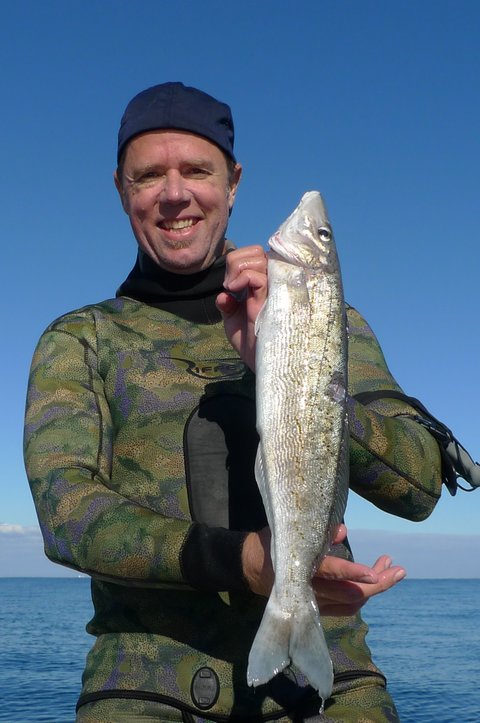King George Whiting
King George Whiting Sillaginodes punctata is arguably one the tastiest species occurring in temperate waters of Western Australia. This species can attain over 2 kg in weight however a 1 kg fish is considered a trophy. King George Whiting are included in the ‘medium risk’ category by the Western Australian Government Department of Fisheries with the minimum size limit set at 280 mm and a bag limit of 8 per day. Individuals of the species are easily identified from other whitings due to the large number of small brown spots along their sides.
The species can be found throughout the southern coast of Western Australia but does not occur much further than Jurien Bay on the west coast. It is generally encountered over sandy substrates in the vicinity of reef. Sand holes in limestone reef common to south west waters are a prime location to look for King George Whiting, especially if a small overhang or undercut is present.
Juveniles mainly inhabit inshore shallow areas of seagrass. In comparison, large King George Whiting are generally encountered further offshore alone or in pairs. In saying that however, it is not uncommon to encounter sized King George Whiting in waters under 5 metres deep. Members of the species mature at around 3 to 4 years of age, and the species is known to form large aggregations associated with spawning at certain times of the year. These aggregations however are more commonly observed in southern waters of the State than metropolitan waters.
A combination of their slender form and a white/grey and brown spotted colouration provides the perfect camouflage over the sandy substrates in which they are found. These factors, in addition to their ‘flighty’ nature makes them very challenging to hunt and hit, and as such are a prime target for the use a multipoint head. Short guns (1100 or less) that can be tracked rapidly through the water are advantageous when hunting King George Whiting. Shorter guns are also easier to maneuver in reef holes and undercuts while hunting.
A missed on a King George Whiting does not always mean an opportunity lost, as the King George will often circle back around to their hole in the reef, giving you a second chance. Patience is a key with this species. If you are lucky enough to spot one form the surface it is often advantageous to follow the fish until it comes to rest on the sand before descending for a shot.
The flesh is firm and sweet. The scales are easily removed and as such a ‘skin on’ fillet is often preferred. The slender nature of the fish means that even fillets off a large King George Whiting are relatively thin. As such fillets should be cooked gently and only for a short period.

